Planting and caring for a canna flower
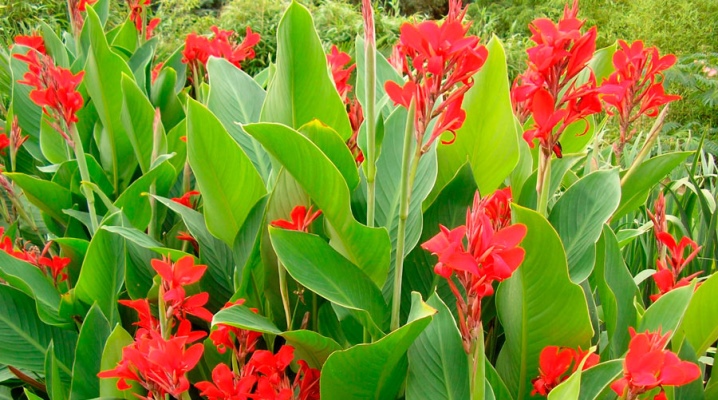
A beautiful perennial canna is chosen for planting by many gardeners. The plant attracts attention not only for its unusual appearance, but also for its ease of cultivation. Of course, when caring for him, problems may arise, even if the summer resident complies with all the conditions of agricultural technology. Let's try to understand the peculiarities of caring for a cannabis.
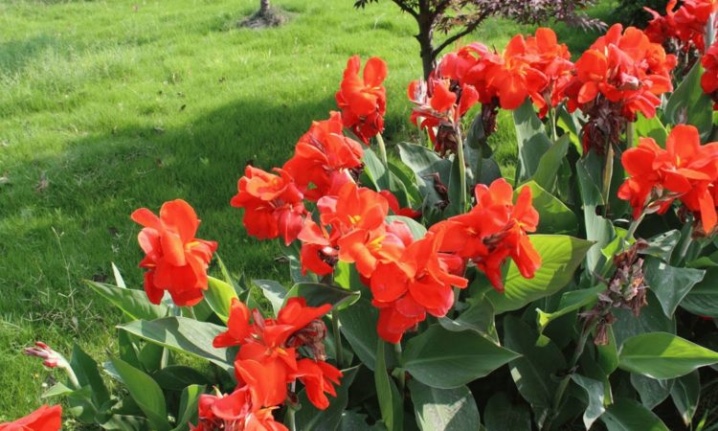
Description
Canna is the only member of the Cannes family. In its natural environment, the plant lives in South and Central America, India, Indonesia and China. The culture is characterized by thin erect stems, the growth of which in some specimens reaches 3 m.The leaves are elongated and rather large in size - about 80x50 cm. Their decorative effect is created due to unusual colors - they can be covered with dark green, dark purple, red bronze and sometimes purple in color.
Most flowers have red shades, but in recent years varieties with white, yellow, orange and pink flowers have also been popular, even varieties with framed petals or specks have been bred. The diameter of the flowers is a maximum of 8 cm, they form asymmetrically on the flower arrow, forming a brush or panicle.
Among the main advantages of the culture are ease of cultivation, good survival rate, immunity to diseases, rapid development, aesthetic appearance, long flowering.
When choosing cannes for garden decoration, pay attention to some of the disadvantages - this is the lack of aroma and extremely low winter hardiness.

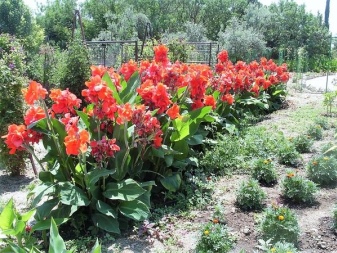
The subtleties of growing at home
A perennial can also be grown at home. Those varieties that are recommended for apartment maintenance originated from Indian Cannes. To cultivate a plant as a pot plant, you should choose varieties and species that are suitable in size for planting in containers. Often the culture is planted as an accent in the flower arrangement of the winter garden.
The advantage of home keeping is the short rest period - only 8 weeks.
You can grow a flower in a pot, or you can take a bush in the country and plant it in a tub - usually such sprouts adapt well to room conditions. When planting, consider the following points:
- before planting, it is recommended to treat the garden soil with an insecticidal solution to reduce the likelihood of insect damage to the plant;
- pick up a spacious pot where the rhizome can fit freely and develop well;
- do not forget to organize high-quality drainage in the container to prevent rotting of the root system;
- use fertile, permeable soil for home maintenance.
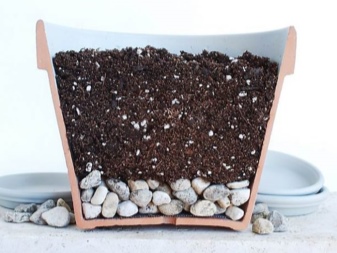
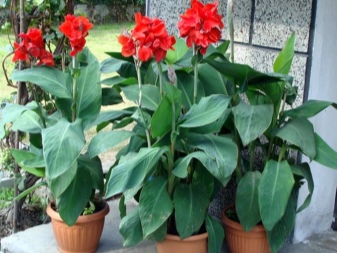
The seeds are enclosed in a dense shell, which is recommended to be softened before sowing. To do this, the planting material is irrigated with boiling water, placed in a thermos with warm water and soaked for 3-4 hours. Some growers place the seeds on a battery for 12 hours instead.
Sowing is done in February at a room temperature of 22-23 degrees. The first shoots will hatch in 20-30 days. The picking of sprouts should be carried out after the formation of 3-4 true sheets.
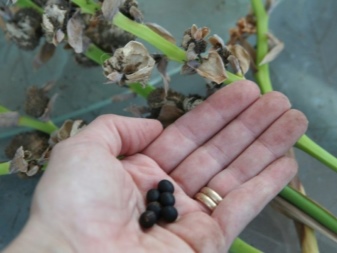
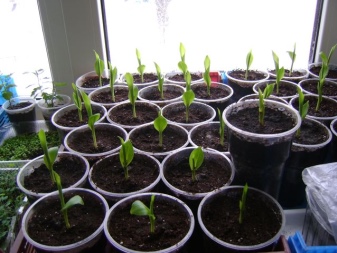
Indoor plant care is somewhat easier than growing it outdoors. A flower planted in a pot does not need to be sprayed, weeded, fertilized or loosened. The container must be kept in a well-lit place, and when watering, use settled water. Watering is carried out as needed. When growing at home, dust should be systematically removed from the leaf plates - this is done with a damp, non-coarse cloth.
Even after flowering, the shrub looks impressive thanks to its unusual foliage. During this period, the culture needs special care. So, for good rest, you should smoothly reduce the frequency of watering, and then completely stop moistening the soil. Leaves are cut at a level of 10-15 cm from the base of the bush. Next, the pot is removed to a cool dry place. In the spring, the plant is removed and the rhizome is cut into several slices, followed by planting. Thus, the flower propagates at home.
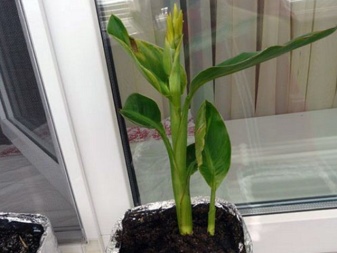

Disembarkation requirements
For planting the presented culture, choose a warm, sunny place. Ideally, this should be an area hidden from the draft. The preferred type of soil is fertile, humus, with an acidity of 6.5-7.0.
It is recommended to fertilize the selected flower bed with rotted manure or compost even before planting in spring or autumn.
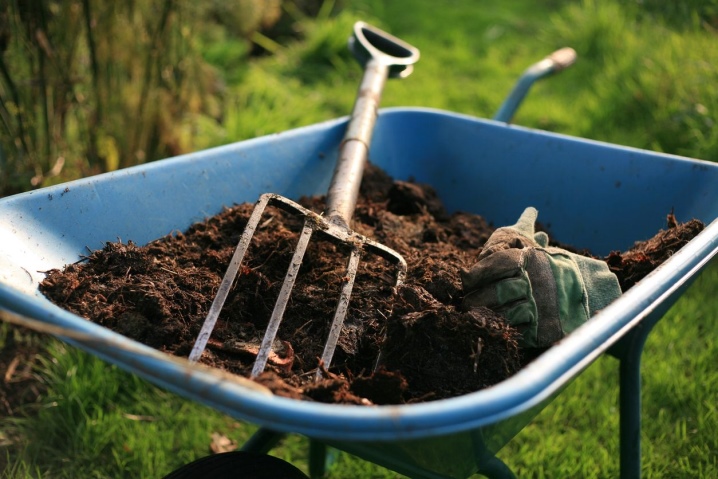
How to plant in open ground?
The culture can be planted with seeds or cuttings. However, only experienced gardeners decide on the first method, since it is more laborious and rarely promising. Seedlings that have emerged from seeds are very often devoid of the characteristics of the parent plant.
Sowing is carried out at home in the above-described way, and a transplant to a summer cottage is carried out on average after mid-May, but the exact time depends on the climatic conditions of the region.
It is important that young seedlings are planted after the ground warms up: for example, in the Moscow region, planting begins at the end of May, and in Siberia - at the beginning of June.
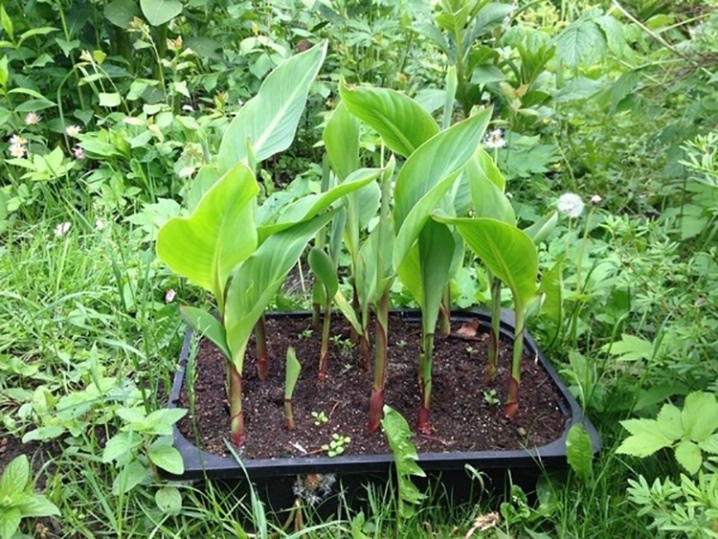
First, you need to dig a hole, organize good drainage and add the following substances in layers:
- manure or hay (layer 20 cm);
- soil (25-30 cm);
- nutrient mixture.
Planting is carried out to a depth of 20–25 cm. When planting, the distance between the seedlings should be observed. So, for low-growing varieties, the planting scheme is important - 30x50 cm, for tall plants - 60x90 cm.During planting, the rhizomes are placed in the holes in a horizontal position, a 5-cm layer of soil is poured on top. Flowering begins as early as two months after planting.
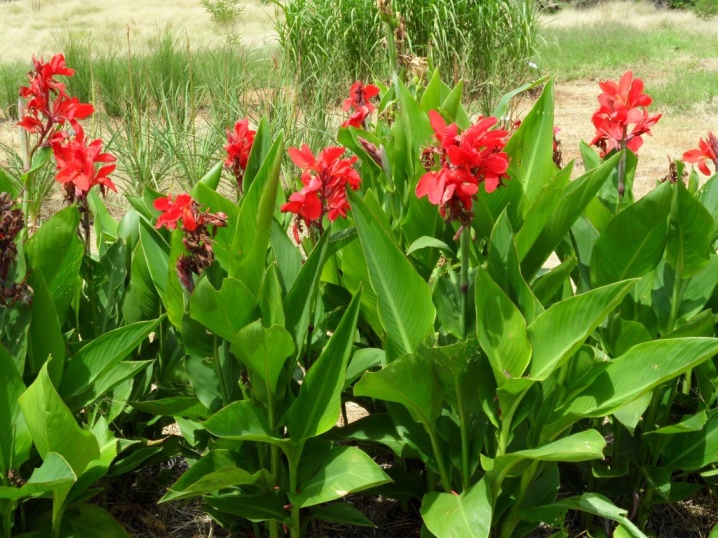
How to take care of it properly?
Watering
Periodically, the bushes need moderate watering. The planting site is moistened until the stems hatch. In the process of flowering, the volume of water for irrigation is increased, but it is important to control so that its stagnation does not form, otherwise the rhizome will be susceptible to fungus or bacterial disease, which will provoke darkening and death of the buds.
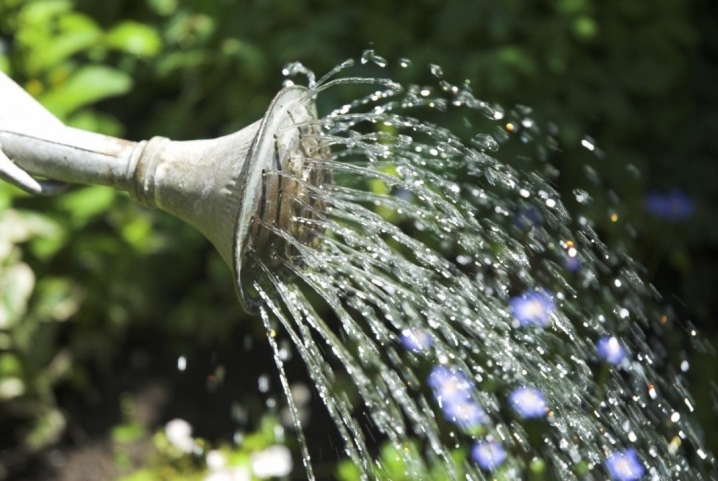
Top dressing
During the growing season, the bushes should be fertilized 2-3 times. Mineral dressings are suitable as additional nutrition. After moistening, the granular mixture is poured onto the surface of the earth and the flower bed is dug shallowly. The recommended amount of top dressing is 40-60 g per 1 m2.
You can use a mixture prepared from nitrogen, potassium and phosphorus fertilizers in proportions of 12, 10, 25 grams, respectively.
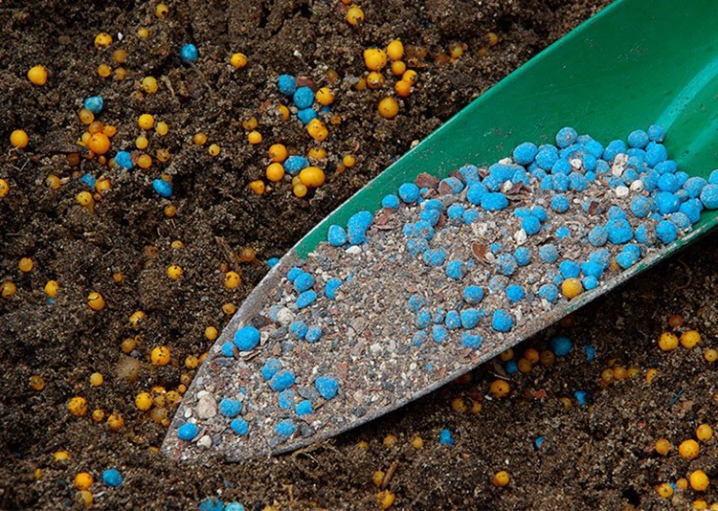
Preparing for winter
Before frosting, the plant needs to be highlighted - this procedure will protect the roots from frost. After the initial frost, the shoots should be cut off at a level of 15-20 cm, the root with an earthen lump should be removed and removed for the winter in a cool room, where there is medium humidity and diffused light.
Usually, the removed rhizomes are placed in wooden boxes, where a mixture of sand, peat, soil and sawdust is also added. They will keep well at 50% humidity and 6-8 degrees. While the roots are stored in the box, observe their condition. If you see signs of rot, remove the damaged area with a knife to healthy tissue and disinfect the cut with iodine. Avoid sudden temperature changes during storage.
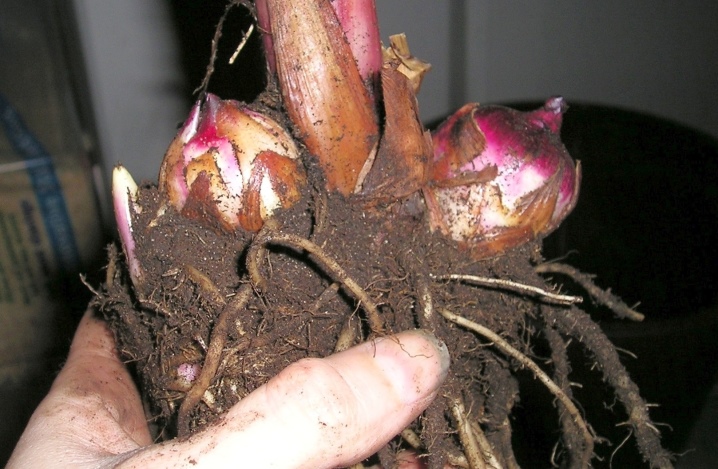
Another possible storage place for rhizomes is the refrigerator. Before this, the roots should be rinsed in running water, soaked for 24 hours in a solution of potassium manganese, dried thoroughly, wrapped in separate paper sheets and placed in the refrigerator on a vegetable shelf. During the winter, do not forget to systematically unfold them and study for the presence of putrefactive processes.
Well dry rhizomes are stored in plastic buckets on the balcony. During severe frosts, the bucket is brought into the room and left on the floor by the balcony. It is allowed to send tubers for wintering in containers with soil in a room where the thermometer does not rise above 15 degrees. An attic, loggia or veranda can be used as such a storage, while it is recommended to moisten the soil a couple of times a month.
If the plant is grown in warm climates, then the rhizome will survive the winter in the garden. To do this, the roots are removed from the ridge and folded on a site in a place protected from the wind, where melt water will not accumulate in spring. From above, the rhizomes are covered with dry sawdust with a layer of 20 cm.

Possible growing problems
Gardeners rarely encounter problems when caring for this representative of the flora, but sometimes they still do not bypass the culture.
Diseases and insects
Despite the resistance of canna to diseases and pests, this plant is sometimes affected by an illness. This is possible if the rules of agricultural technology are not followed, for example, when organizing poor drainage during planting. The following diseases and insects are more common.
- Bacteriosis It can be recognized by black spots on buds and foliage. Fighting the disease is usually useless, so gardeners are advised to eliminate the affected flower from the flower bed.
- Rust. The disease is indicated by red streaks on the leaves and a gray sediment on the flowers. In this case, it is sufficient to remove the affected parts and destroy them.
- Fungus. A fungal infection can be judged by the presence of yellowness on the leaves. To save the affected flower, it is treated with a light solution of potassium permanganate.
- Caterpillars. These pests are usually visible with the naked eye. Special means help to get rid of them.

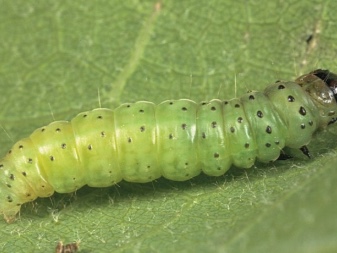
Sprouts do not hatch
Sometimes the problem for novice gardeners is the lack of seedlings. Sprouts may not appear due to the poor quality of the planting material, but there are other reasons for this. If seedlings are not observed, then carefully examine the tuber. If it does not have dark spots or mold marks, soak it halfway in water or a root-forming agent such as Zircon. If the material is of high quality, then in 1-2 weeks it will "wake up" and will actively develop.
If the plant has already grown in the garden before and does not want to "wake up" after wintering, then the reason for this may be non-compliance with storage conditions. For example, the rhizome could dry out, freeze, or rot. If you notice signs of spoilage on the bulb, cut off the affected fragments and disinfect the tuber. When dry, soak the rhizome in water. If the tuber is frozen, then it will not be possible to restore it.
After processing the spoiled rhizome, try to germinate it in peat. Keep the substrate moist and keep the planting container in a warm room, regularly feeding the crop or adding Zircon solution. After 2-4 weeks, the bulb should wake up.
Another reason for the lack of sprouts can be a lack of heat. In this case, it is enough to transfer the specimen to the greenhouse or put it on a lighted windowsill.

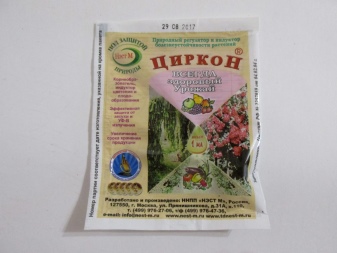
The plant does not bloom
A frequent problem is the lack of flowering in the culture. Even a florist who has followed all the rules for the care and storage of planting material may face this. Usually the source of this problem is the harsh climate of the region. For example, this phenomenon is characteristic of plants planted in Siberia. In such conditions, tubers that were taken out after storage necessarily need the above-described awakening procedure.
If the rhizomes were not awakened and flowering did not occur, then in the fall, before the first cold weather, remove the non-flowering bush from the garden and transplant it into a container. Place the plant in an apartment and follow all the care rules mentioned above. Most likely, in indoor conditions, the culture will delight its owner with flowers.
Sometimes flowering is absent in home maintenance. The reason for this situation cannot be explained by the climate, so it can be assumed that the culture lacks heat, water and air humidity.
Having created favorable conditions for the life of a green pet, the florist can enjoy lush and long flowering on his window.
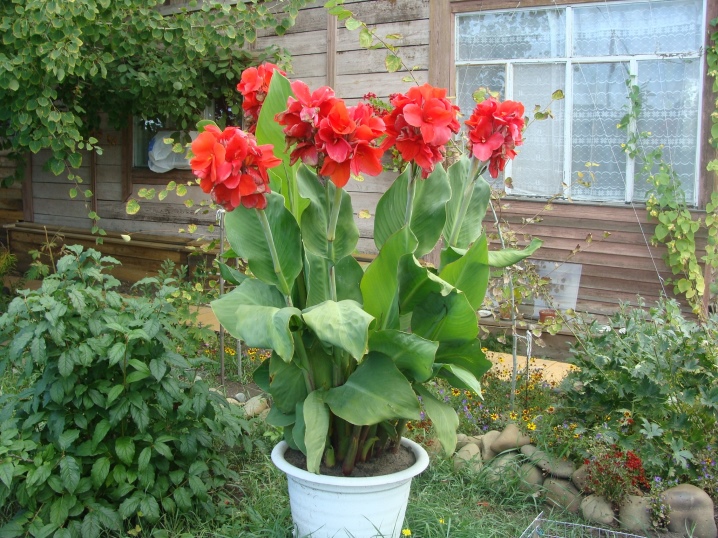
For growing and caring for cannes, see the next video.







































































































The comment was sent successfully.